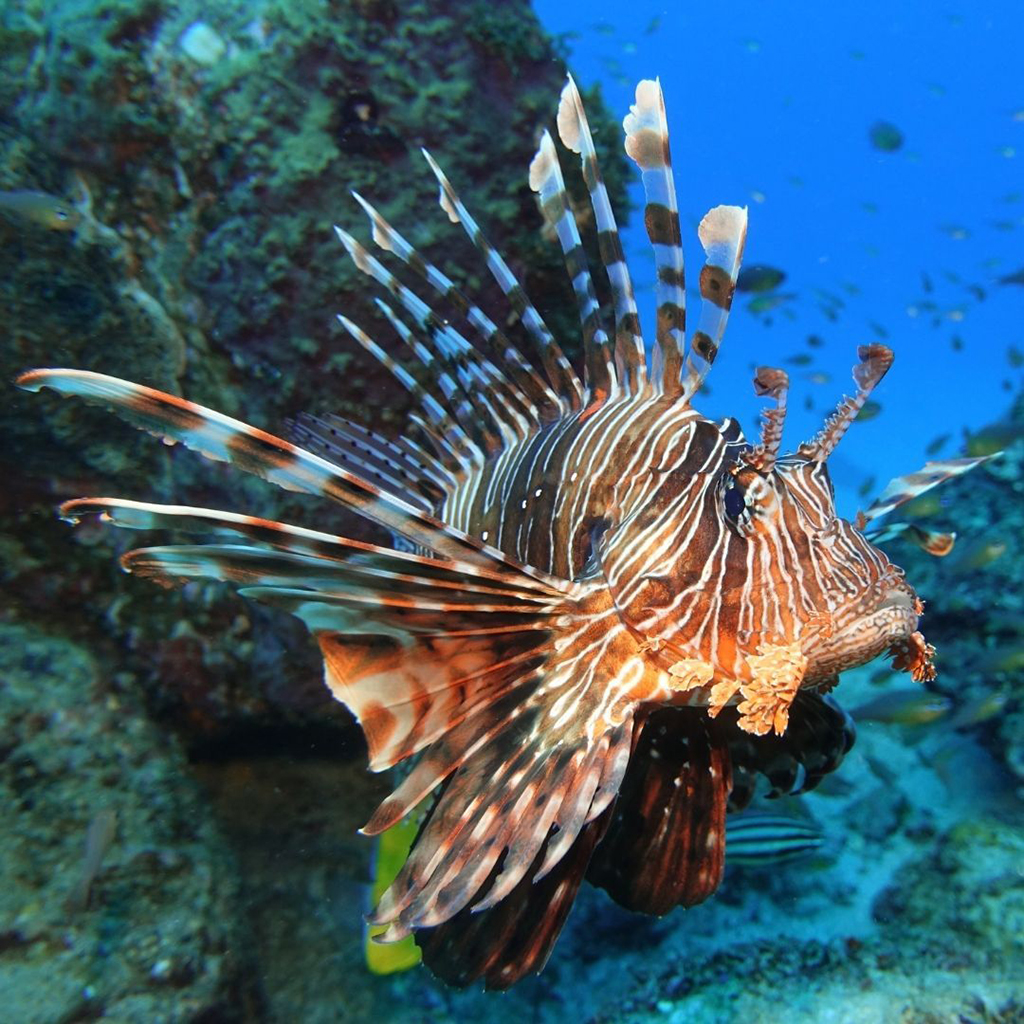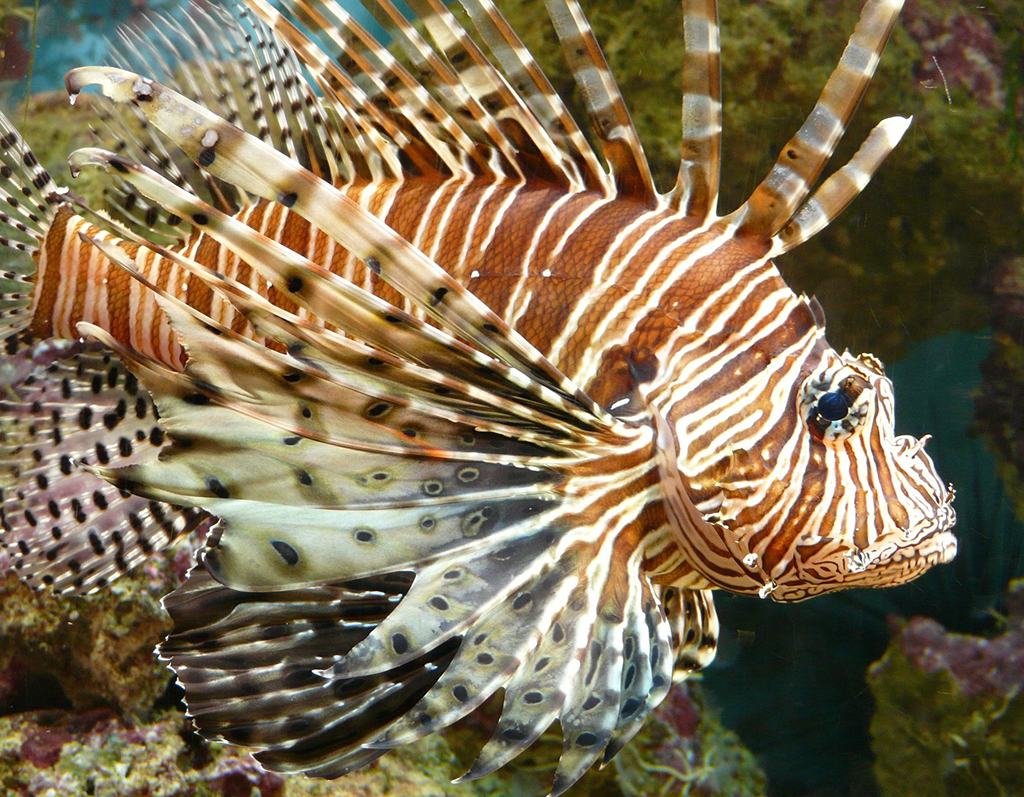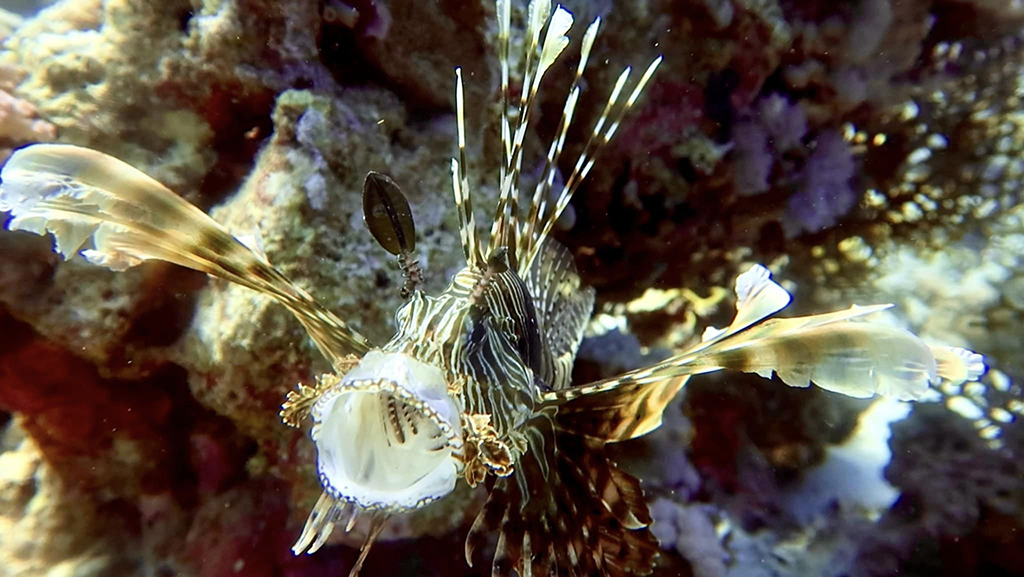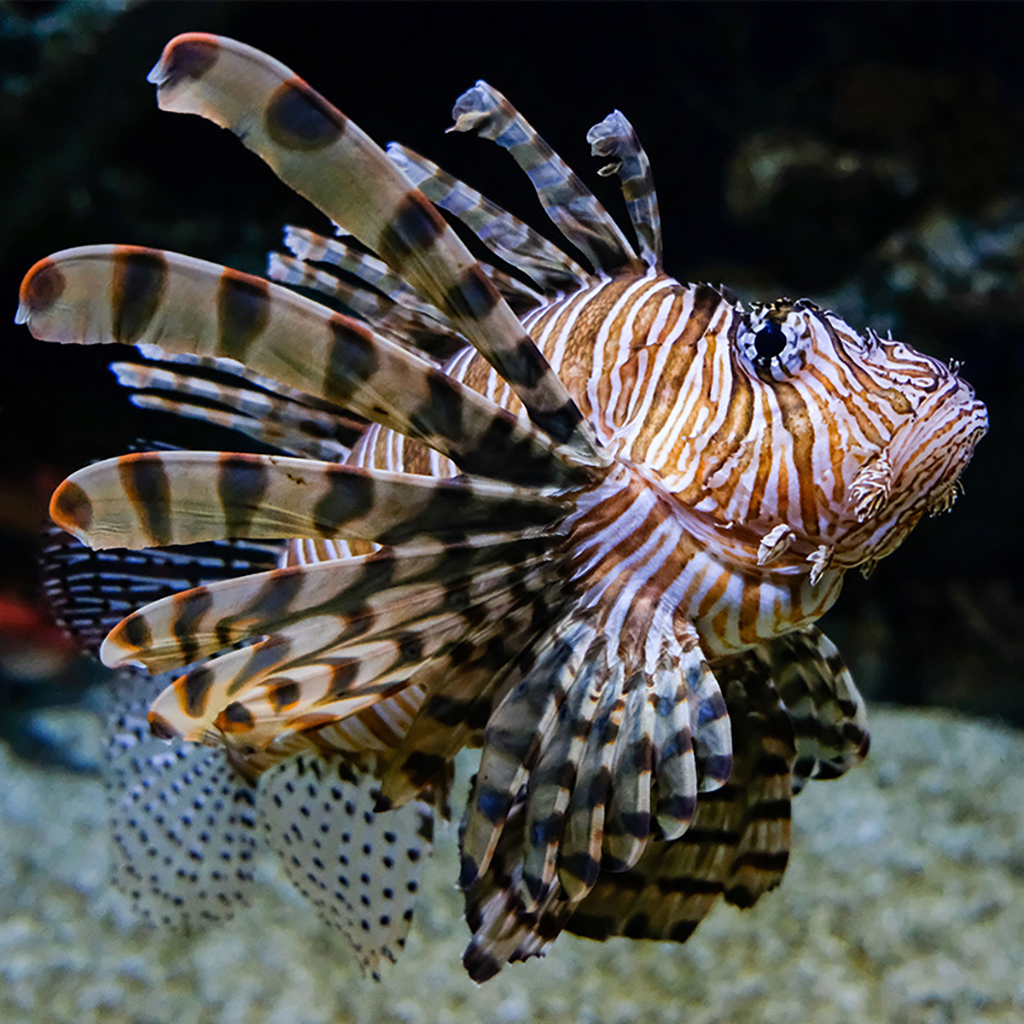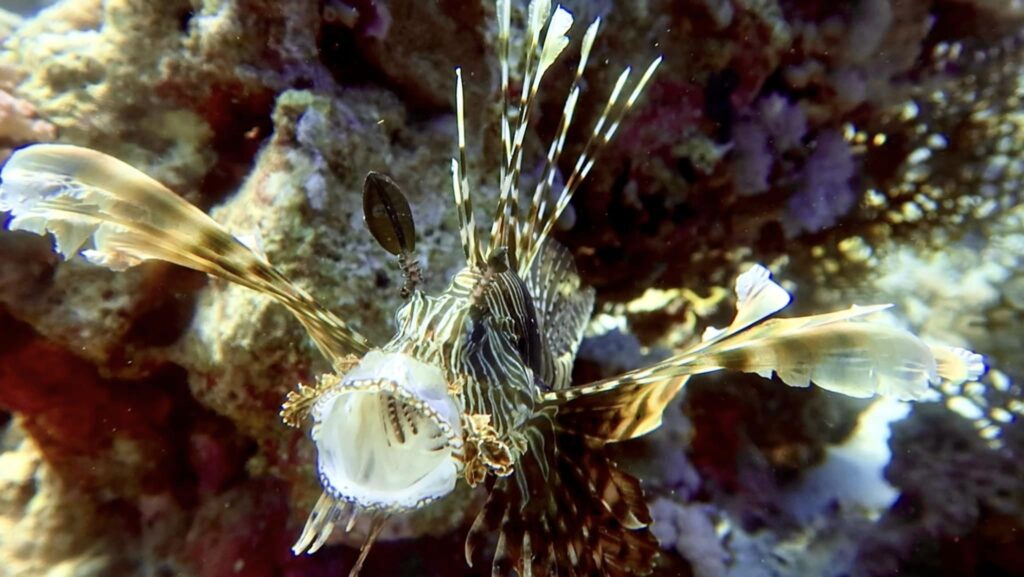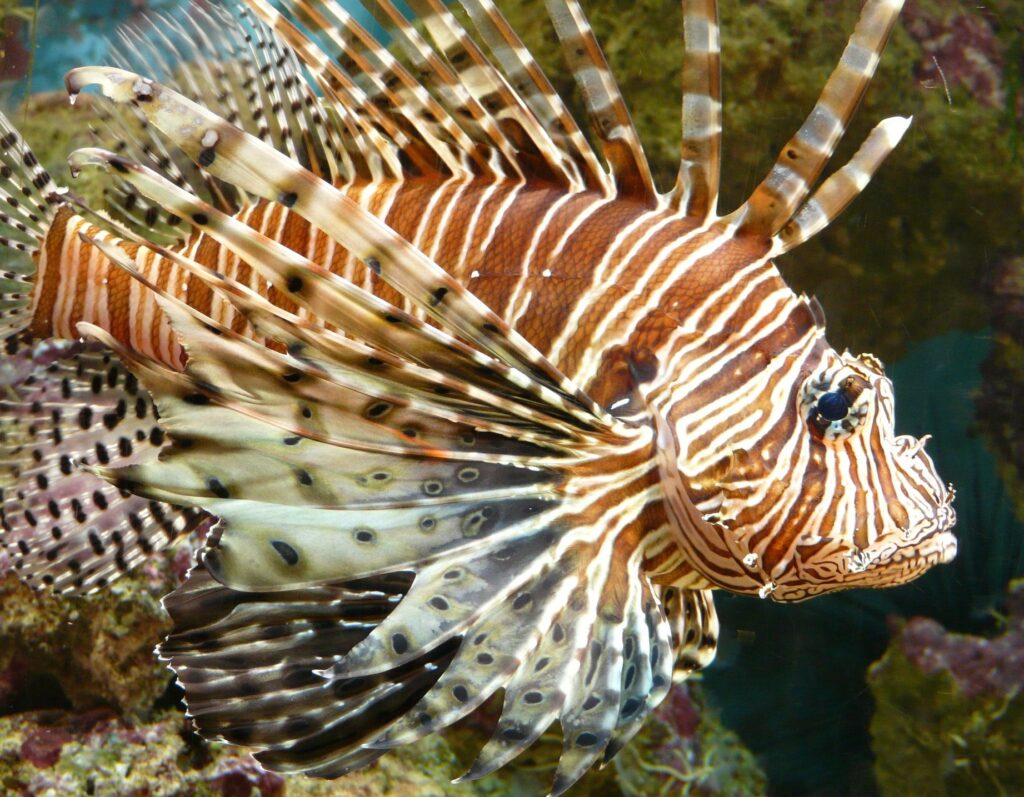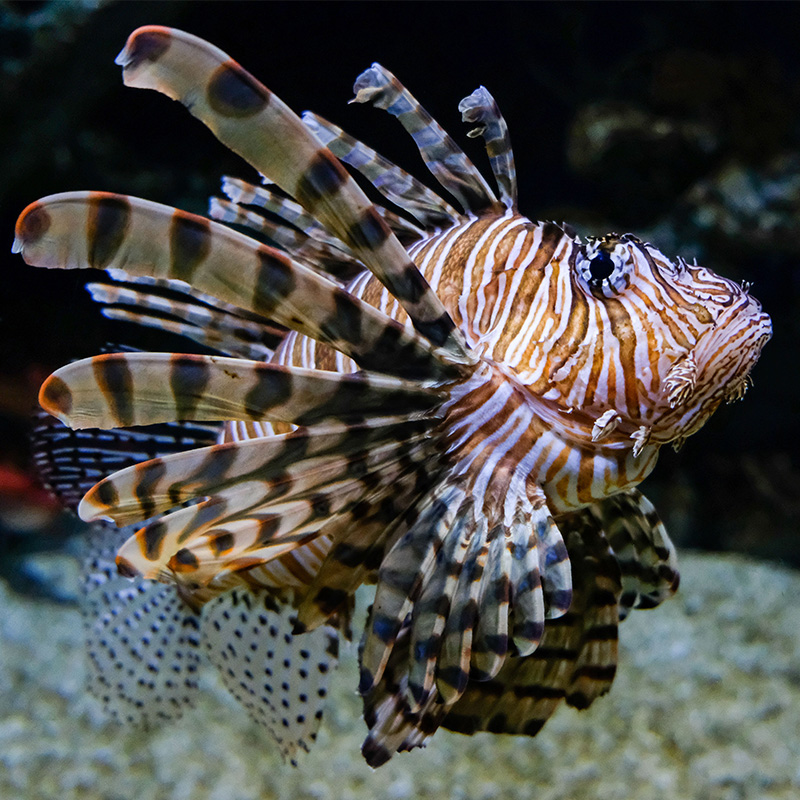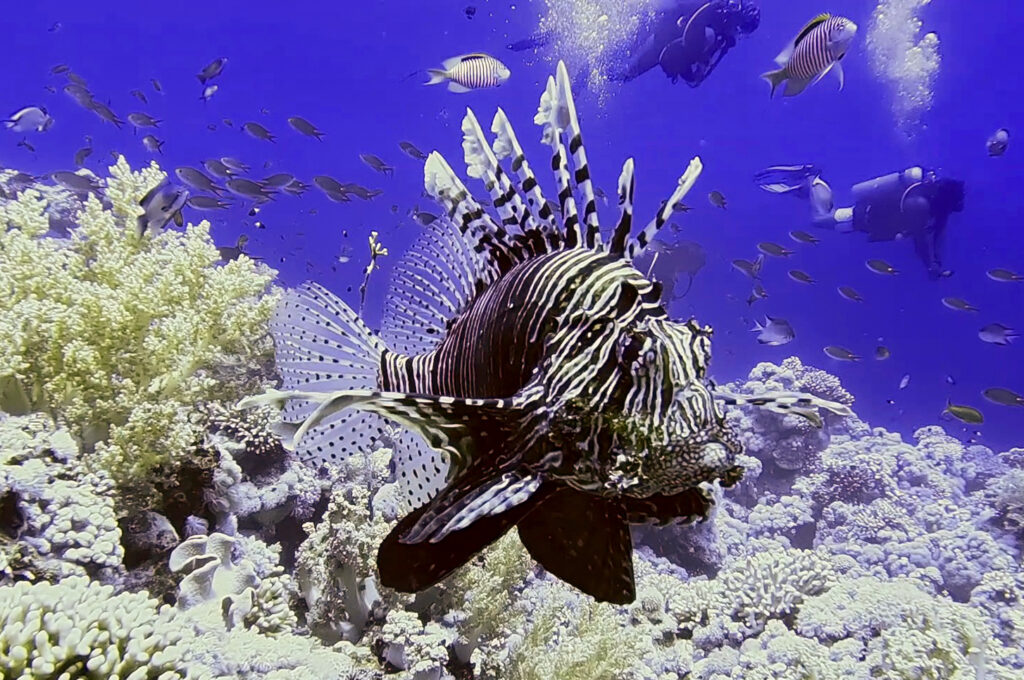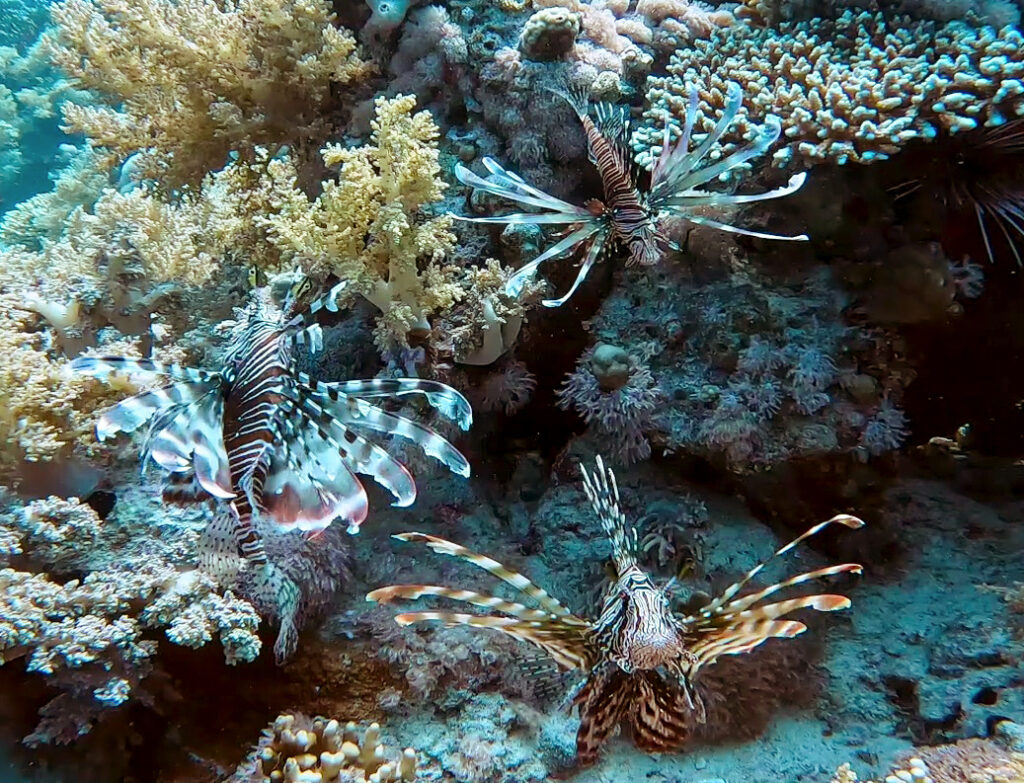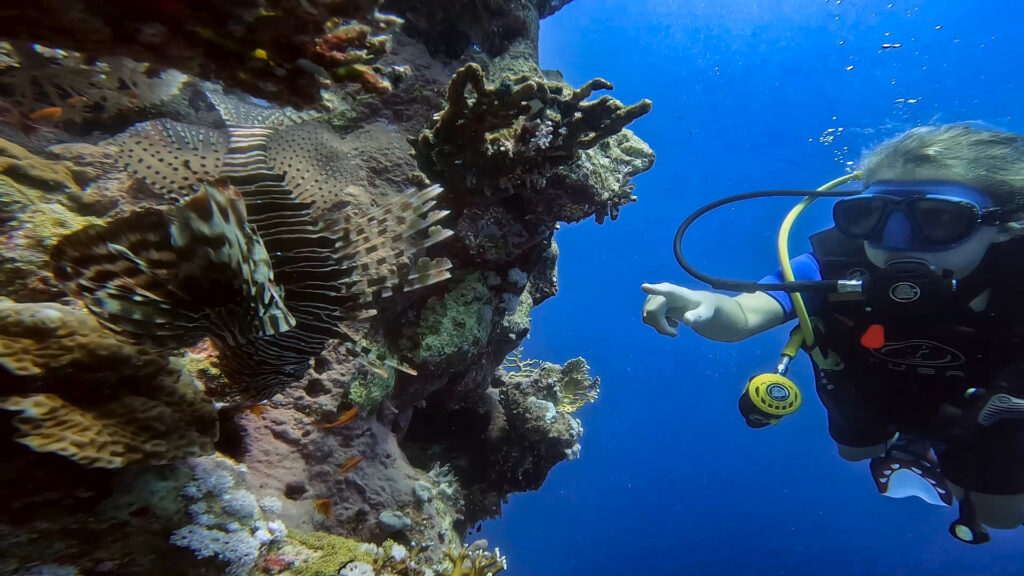Lionfish
Lionfish are beautiful, they’re dangerous, and they know it. Many encounters involve them approaching my camera with their spiny, dorsal fins fully outstretched, ready to show who’s boss. They’re curious and often wander around me in a stalking manner, slowly undulating the soft rays of their fins as I deftly capture them within the frames. Thanks to their beautiful fins you see them sometimes very gracefully floating above the coral. Their main characteristics are the unbranched fin rays and their spotted membranes.
At the daytime, lionfish are mostly hidden and hang upside down in small caves and overhangs. At dusk, they become active and go hunting. Lionfish feed on small fish, shrimps, and crabs. Exceptionally slowly and carefully he starts to spread its fins and drive its prey into a corner. With lightning speed, he then moves forward and with remarkable speed sucks his prey inside before swallowing. Lionfish hunt uniquely too, but similar to grouper. They will eat anything that fits in their mouths. To catch prey Lionfish get close and open their mouth while lunging forward! They don’t bite or chew, this tactic creates a vacuum, so it’s quite easy for them to hunt.
The color and size of the lionfish depend on the species. The body of most species is dominated by a red, brown or maroon color with white stripes along the body and fins.
Lionfish can lay up to 30,000 eggs per month. Females and males come together at the surface and carry out a short courtship. Here they swim a few times up and down. She releases her eggs, which are now as one big mass of jelly sticking together. Immediately just after, in open water, they get fertilized with the sperm of the male. The jelly dissolves and the young fish are born after a few days. After birth, they are almost transparent, with a diameter of a few millimeters. A few days later they seek calm water. Here they will spend the first months of their life and they feed on plankton.
These creatures must have the most spikes any fish has ever had! And nobody should touch them either. They have 18 venomous feathery spines along their backs and sides which carry a deadly poison. The venom can be injected into the bloodstream via a sharp spine. These spikes are poisonous.
If one is spiked by a Lionfish then one should seek Medical attention as fast as possible. Any spines stuck in the body should be removed as quickly as possible. The good news is that although it will be painful it will not be fatal or have any long term effects unless one has a severe allergic reaction which is unlikely. The best treatment is to apply heat onto the area where one has been spiked. Often but not always hot water is the best way of applying heat to an affected area. Soaking the area in water between 42 C and 45 C is the recommended treatment.
Lionfish don’t only use their spikes for defense but also to hunt. Lionfish are stalking predators that often corral prey into a corner. They normally eat fish half their size but if desperately hungry they will attempt to eat a fish slightly larger then them. Lionfish have very few predators due to their venomous spines though a few species of grouper and sharks may be able to prey on them. An adult lionfish can grow as large as 18 inches (45.7 cm), while juveniles may be as small as 1 inch (2.5) or less.
Once stripped of its venomous spines, cleaned, and filleted like any other fish, the lionfish becomes delectable seafood fare. Although they are edible, nobody has the rights to hunt or go fishing in the Red Sea. There are very strict rules.
- Lionfish use their fan-like pectoral fins to “corner” their prey.
- Female Lionfish can lay approximately 2 million eggs per year.
- Lionfish are nocturnal so during the day they normally lay around relaxing near coral.

